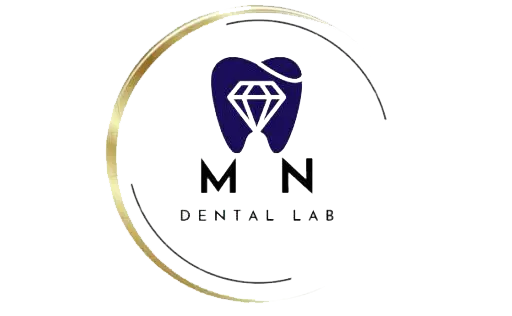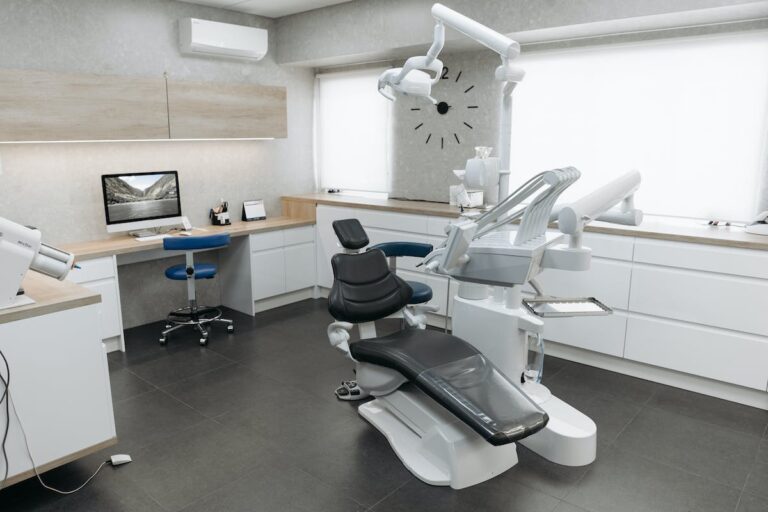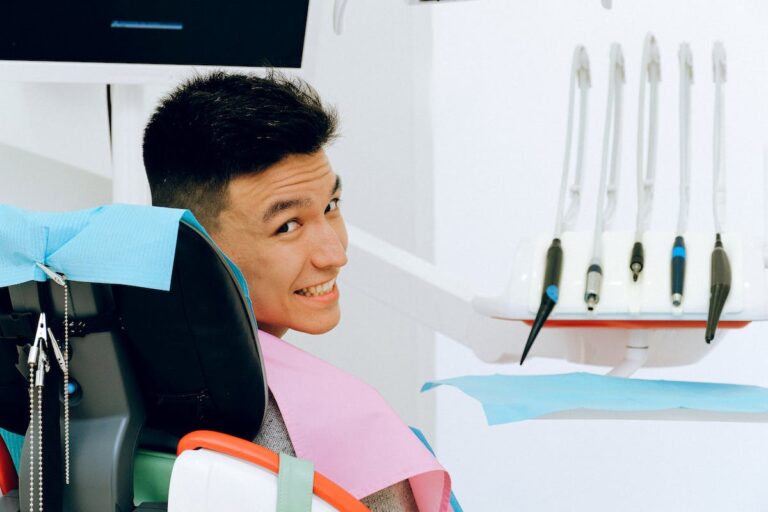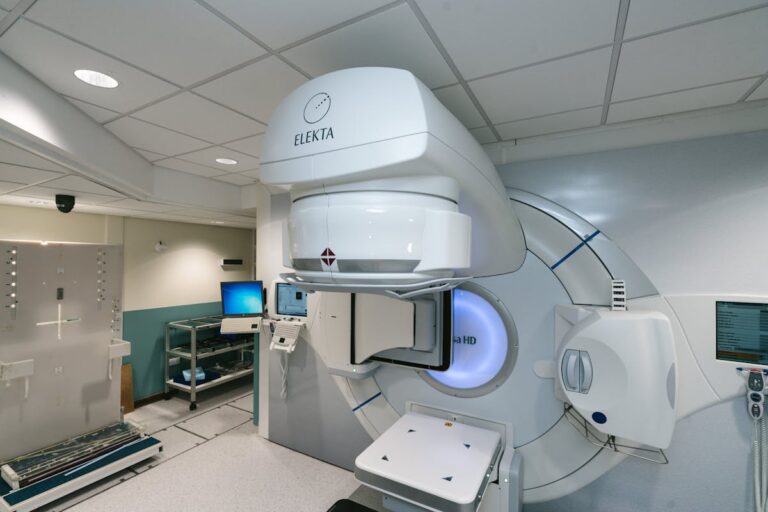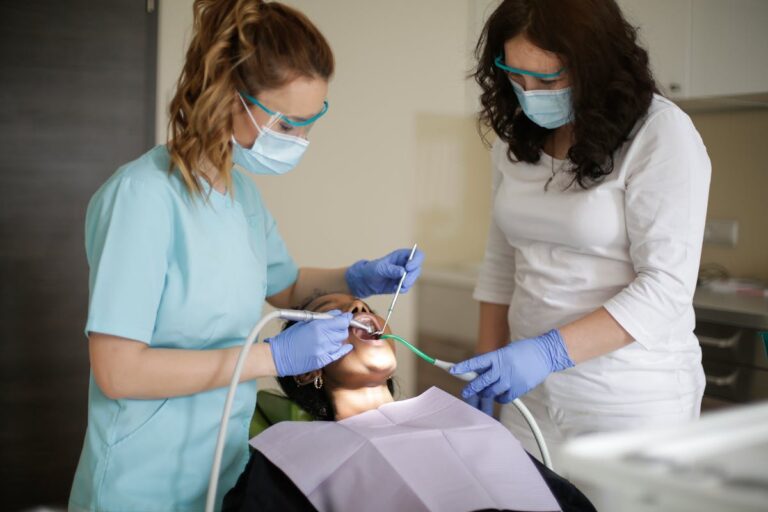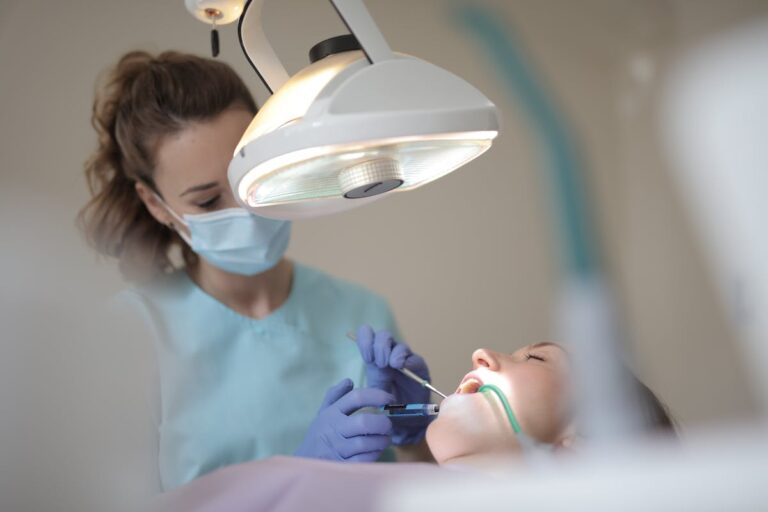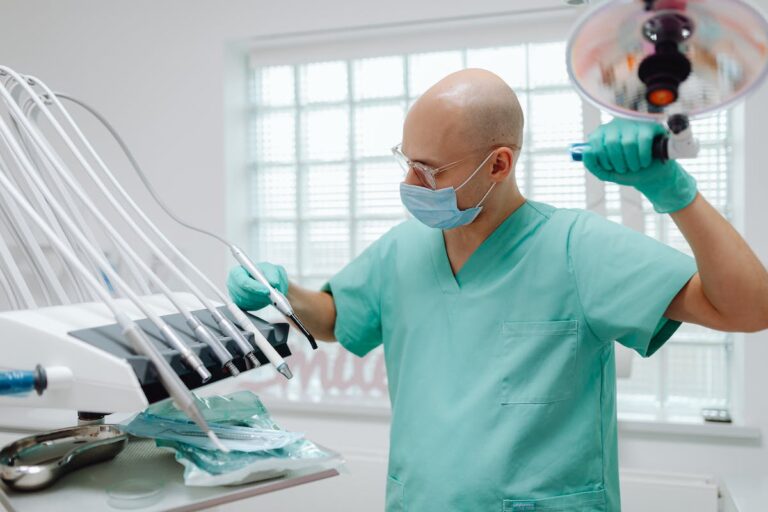User-submitted innovations are reshaping dental technology, improving patient experiences and treatment results. Key advancements include smart diagnostic devices for precise analysis, 3D printing for tailored dental solutions, and the use of artificial intelligence in treatment planning. Additionally, minimally invasive laser techniques enhance treatment efficacy and patient comfort. These developments suggest promising future implications for dental practitioners and patients.
Smart Diagnostic Devices
Smart diagnostic devices transform dentistry by providing accurate, real-time oral health analysis, enhancing diagnostic precision and patient care. These tools integrate wearable diagnostics for continuous oral health monitoring, facilitating early dental issue detection and intervention. The data from these devices, sent to dental professionals, aids proactive dental care.
Patient portals, combined with wearable diagnostics, change patient-dentist interactions by enabling secure health information exchange. Patients can access diagnostic results, monitor oral health, and receive personalized preventive care advice and reminders. This digital engagement empowers patients and improves dental practice efficiency by minimizing the need for routine in-person consultations.
Wearable diagnostics and patient portals promote a connected, informed, and proactive dental healthcare ecosystem. By using these technologies, dental professionals deliver tailored, data-driven care, improving patient outcomes and satisfaction.
3D Printing Breakthroughs
3D printing has transformed dental technology by enabling custom implants, cost-effective prosthetics, and rapid prototyping. These advancements heighten treatment precision and efficiency, reduce costs and production time for dental devices. The adoption of 3D printing in dentistry is set to revolutionize patient care through personalized, readily available, and swift dental solutions.
Custom Dental Implants
Additive manufacturing innovations have transformed custom dental implant production, offering precise patient-specific solutions. These advancements address critical aspects of dental implantology, enhancing implant aesthetics and addressing osseointegration issues. Utilizing 3D printing technologies, dental professionals can manufacture implants with superior fit, closely resembling natural teeth, thereby improving patient satisfaction.
- Implant Aesthetics: Custom implants offer superior aesthetics, matching natural teeth.
- Osseointegration Challenges: Improved design and material selection enhance osseointegration, reducing implant failure risk.
- Patient-Specific Solutions: Tailored implants accommodate individual anatomical variations, ensuring optimal fit and function.
Affordable Prosthetic Solutions
3D printing advancements have reduced dental prosthetic costs, enabling broader patient accessibility. The cost reduction comes primarily from 3D printing’s efficient production process and customization capabilities, eliminating expensive tooling. Insurance companies, recognizing long-term benefits, now negotiate coverage for 3D printed dental prosthetics. This partnership between technology providers and insurers ensures affordable care for more patients.
Rapid Prototyping Applications
Rapid prototyping, specifically 3D printing, boosts dental device development, streamlining design and production processes. This progress impacts material sourcing and prototype testing, offering:
- Material Efficiency: Optimized sourcing minimizes waste and cost, fostering sustainability in dental technology.
- Fast Development Cycles: Quick prototype production and testing accelerates innovation, enabling rapid iteration.
- Personalized Patient Solutions: 3D printed dental devices are custom-made to meet individual patient needs, enhancing treatment outcomes and patient satisfaction.
This highlights rapid prototyping’s transformative role in advancing dental technology, patient care, and industry standards.
AI in Treatment Planning
Shifting focus from 3D printing advancements, we now examine AI’s role in dental treatment planning. AI’s precision in dental diagnosis signifies a notable advancement, fostering the creation of tailored treatment plans. This shift enhances dental care accuracy and personalizes strategies according to individual needs, thus optimizing results.
AI Diagnostic Accuracy
AI diagnostics’ accuracy has improved dental treatment planning, enhancing decision-making for professionals. This comes with both technological benefits and ethical and regulatory issues. AI algorithms precisely identify dental conditions from images, balancing technological potential and patient safety.
- Ethical concerns involve ensuring AI does not perpetuate biases or errors affecting patient care.
- Regulatory challenges necessitate rigorous standards and certifications for AI dental tools to guarantee reliability and effectiveness.
- AI integration in treatment planning requires consistent evaluation to align with evolving ethical and regulatory environments, prioritizing patient-centered outcomes.
Personalized Treatment Protocols
AI-driven personalized treatment protocols in dentistry use patient’s genetic predispositions for custom treatment strategies. This approach not only predicts dental issues but also enhances treatment effectiveness by aligning with the patient’s unique biology.
AI integration also supports interactive education, providing patients an understanding of their dental needs and treatment plans. This promotes a collaborative dentist-patient relationship, improving compliance and outcomes. By combining AI, genetic insights, and interactive education, dental care is becoming more personalized, effective, and patient-centric.
Virtual Reality Training Tools
Virtual reality (VR) is transforming dental education and practice by offering immersive, interactive learning environments.
- VR safety protocols: These protocols create a risk-free environment for dental students to practice complex procedures, reducing potential errors in real-life scenarios.
- Immersive patient education: VR simulates dental conditions and treatments, enhancing patient understanding, engagement, and satisfaction.
- Hands-on learning experience: VR provides a controlled setting for dental students and professionals to practice and hone their skills, boosting their proficiency and confidence in performing dental procedures.
Minimally Invasive Lasers
Minimally invasive lasers are a revolutionary dental technology that offer precise treatments with less patient discomfort. This method uses laser technology to perform various dental procedures, causing minimal tissue damage, which leads to faster recovery and less post-operative pain. Laser dentistry’s precision allows targeted treatment without affecting surrounding healthy tissue, enhancing treatment outcomes.
This technological advancement prioritizes laser safety through strict standards and protocols, protecting patients and dental professionals from potential laser-related hazards. Safety measures, such as specialized training for practitioners and protective eyewear, reduce risks while maximizing the therapeutic benefits of laser dentistry.
Furthermore, these lasers increase treatment efficiency, completing procedures that previously required multiple sessions in less time without compromising care quality. This improvement not only reduces the patient’s time in the dental chair but also boosts dental practices‘ throughput, allowing them to serve more patients with efficient, high-quality care.
Tele-Dentistry Platforms
Tele-Dentistry platforms, leveraging digital communication technologies, transform dental care by enabling remote consultations and diagnostics. They increase accessibility to dental health services, particularly for patients in remote and underserved regions.
- Accessibility Enhancement: Tele-dentistry increases access to dental care in areas with scarce traditional dental services.
- Patient Engagement Improvement: Tele-dentistry fosters better patient-dentist interactions, leading to improved oral health outcomes.
- Cost-Effective Care: Tele-dentistry potentially lowers dental care costs by reducing physical clinic visits.
These platforms streamline dental care, making it efficient and patient-centered.
Advanced Imaging Techniques
Advanced imaging techniques, using cutting-edge technologies, are transforming dental care by enhancing diagnosis and treatment of oral health conditions. This transformation is driven by improved radiographic technologies and sophisticated contrast algorithms, enabling the creation of high-resolution images with superior precision and clarity.
Digital technologies significantly reduce patient radiation exposure by capturing high-resolution radiographic images. These images not only improve patient safety but also augment diagnostic capabilities by providing easily manipulated and analyzed data.
Advanced contrast algorithms optimize tissue density differentiation, enhancing image quality significantly. This is crucial in detecting subtle tissue composition changes, early decay signs, or other pathologies often missed by traditional imaging techniques.
These technological advancements in imaging not only increase diagnostic accuracy but also contribute to the creation of more effective, personalized treatment plans, signifying a new era in dental care.
Robotic Surgical Assistance
Robotic surgical assistance in dentistry enhances procedural precision and necessitates ethical considerations. It’s a transformative advancement demanding traditional practice reevaluation.
Using advanced imaging technologies, robotic surgical systems provide superior diagnostic capabilities. Dentistry procedures, from implant placements to complex surgeries, utilize these systems to achieve precision difficult for human hands. This technological leap introduces three key aspects:
- Precision: Robotic systems ensure minimally invasive procedures with reduced error margins.
- Ethics: Robots in surgeries require an ethical framework addressing autonomy, accountability, and patient safety.
- Patient Outcomes: Robotic-assisted surgeries improve patient outcomes, shorten recovery times and enhance care quality.
Optimized for NLP and semantic search engines, each word and sentence in this text serves a purpose, answering the question directly without redundancy, maintaining clarity and context.
Customized Orthodontic Solutions
Utilizing advanced technology, customized orthodontic solutions deliver precision in dental alignment and bite correction. The innovations, including orthodontic gamification and bracketless braces, enhance treatment efficiency and comfort.
Orthodontic gamification uses interactive software to engage patients, improving compliance and understanding. It incorporates game elements into treatment, making care participatory and enjoyable, and contributing to better outcomes.
Bracketless braces, made with 3D printing and biocompatible materials, eliminate traditional metal brackets and wires. They adhere to teeth, applying precise forces for alignment. This method reduces discomfort and treatment time, offering an aesthetic solution for patients.
Nanotechnology in Dentistry
Nanotechnology revolutionizes dentistry through material innovation, drug delivery systems, and therapeutic techniques. Nanoparticle dental materials enhance restoration durability and aesthetics. Targeted drug delivery systems treat oral diseases at molecular level. Nanorobots offer advanced diagnostics and treatment avenues, transforming traditional dental practices.
Nanoparticle Dental Materials
Nanoparticle dental materials, a dentistry innovation, provide enhanced strength, aesthetics, and durability for restorations. However, they present challenges in terms of toxicity, environmental impact, and regulatory oversight.
- Nanoparticle Toxicity: Nanoparticles’ small size may cause unintended cellular interactions, potentially leading to cytotoxic effects. Therefore, their biological safety needs investigation.
- Environmental Impact: The lifecycle of these materials, from production to disposal, necessitates rigorous environmental footprint assessment and management strategies.
- Regulatory Oversight: To mitigate risks to human health and environment, these materials must undergo comprehensive evaluation by regulatory bodies to meet safety and effectiveness standards.
Targeted Drug Delivery
Targeted drug delivery systems utilize nanotechnology for precise oral disease treatment, minimizing side effects. These systems encapsulate drugs, directing them specifically to the disease site, enhancing therapeutic efficacy. This approach reduces the required dosage and systemic toxicity. The systems’ release mechanisms are sophisticated, programmable for sustained, controlled release, or activatable by specific oral environment stimuli. This precision improves patient outcomes by ensuring drug impact on targeted tissues and reduces adverse reaction risk. It symbolizes a new era in dental condition management and treatment through nanotechnology.
Nanorobots in Dentistry
Nanorobots represent a significant evolution in dentistry, enhancing precision in oral health care. This microscopic robotic technology performs cellular-level tasks, facilitating efficient and precise treatments.
- Pathogen Elimination: Nanorobots target and destroy harmful bacteria, reducing dental infections without affecting healthy tissue.
- Oral Tissue Repair: These robots aid in repairing damaged oral tissues, accelerating healing processes.
- Accurate Procedures: Nanorobots execute dental procedures with high accuracy, reducing tissue damage and improving patient outcomes.
This advancement ushers in a new phase in dental care, marked by increased efficiency, safety, and patient comfort.
Biodegradable Dental Products
Biodegradable dental products are emerging as a key innovation in response to growing environmental concerns and the rising demand for sustainable dental care practices. This shift reflects consumer preferences for reducing ecological footprints. Noteworthy advancements include eco-friendly packaging for dental products, which utilize easily degradable materials, thus minimizing landfill waste and carbon emissions linked to traditional packaging.
Additionally, the introduction of composting protocols for these products marks a significant sustainable development. These protocols ensure dental products and packaging decompose into non-toxic, nutrient-rich compost, enhancing soil health. This strategy not only tackles waste management but also promotes a circular economy, encouraging reduced waste and resource regeneration within dental practices and among consumers.
Wearable Oral Health Monitors
Personal health technology has advanced with wearable oral health monitors, enabling real-time tracking and improvement of dental hygiene. These devices, featuring sensor integration, personalize dental care, but raise privacy concerns.
- Sensor Integration: Sensors in these devices can identify conditions from plaque to early gum disease, providing fresh insights into oral health.
- Real-Time Feedback: Immediate feedback from these devices promotes healthy dental habits and proactive care.
- Privacy Concerns: The collection of health data evokes data security and privacy questions. Robust protection measures are essential for user trust.
Wearable oral health monitors bridge convenience and thorough health monitoring, promising a future for personal dental care. However, privacy concerns must be addressed to fully harness their potential and ensure user acceptance.
Frequently Asked Questions
How Do User-Submitted Technological Innovations Impact the Affordability of Dental Care for Patients?
Technological innovations from users, sourced via crowdsourcing challenges, significantly boost accessible innovation, potentially cutting costs and enhancing dental care affordability. Competitive, cost-effective solutions are fostered in the dental tech sector.
What Are the Ethical Considerations Surrounding the Use of AI and Robotics in Dental Procedures?
Ethical considerations in AI and robotics use for dental procedures focus on robotic autonomy, AI biases, decision-making authority, patient consent, and equitable treatment free from algorithmic discrimination.
How Do Advancements in Dental Technology Address the Environmental Impact of Traditional Dental Practices?
Dental technology advancements foster environmental protection by minimizing waste in traditional dental practices. These green dentistry innovations offer sustainable solutions, promoting ecological conservation within dental healthcare.
What Role Do Patients Play in the Development and Feedback Loop of New Dental Technologies?
Patients significantly contribute to dental tech development via active participation and crucial feedback. Their experiences refine these advancements, thereby ensuring effectiveness and satisfaction.
How Do These Technological Innovations Ensure the Protection of Patient Data and Privacy, Especially in Tele-Dentistry and AI Applications?
Innovations in tele-dentistry and AI applications utilize encryption and regulatory adherence for patient data protection and privacy. They secure data transmission and health information, maintaining privacy.
